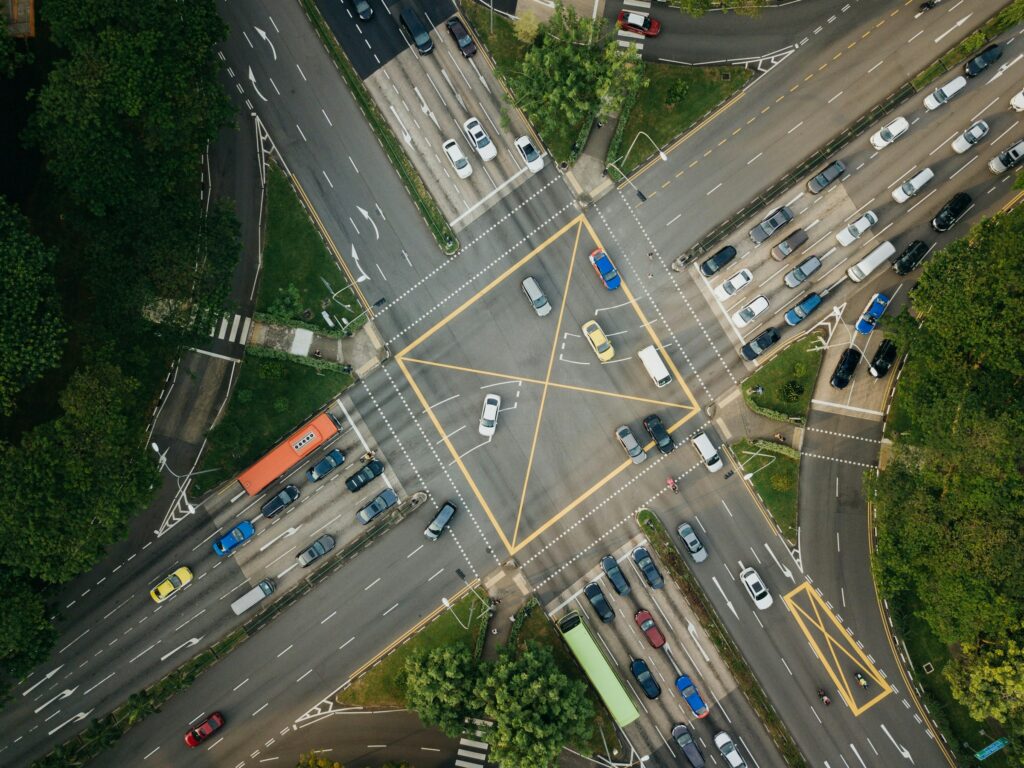Every year, thousands of accidents happen at intersections across Florida. While many drivers assume highways or freeways are the most dangerous places to drive, intersections actually account for a large number of serious injuries and fatal crashes. Whether you’re a daily commuter, a rideshare driver, or a cautious weekend traveler, understanding where and why these accidents happen can help keep you safer and better prepared.
Why Intersections Are High-Risk Zones
Intersections require multiple vehicles to move in different directions at the same time, often with pedestrians, cyclists, and changing traffic signals involved. A momentary distraction, a misjudged turn, or someone running a red light can lead to serious consequences. According to the Florida Department of Transportation, intersection crashes are more likely to result in T-bone impacts, rear-end collisions, and multi-car pileups.
Common Causes of Intersection Accidents in Florida
-
Distracted driving, especially texting
-
Speeding through yellow or red lights
-
Failing to yield the right of way
-
Limited visibility due to weather or time of day
-
Aggressive turning without signaling
These behaviors, combined with high traffic volume and poor intersection design, increase the likelihood of injury.
High-Risk Intersections Across the State
While crash statistics may vary from year to year, several intersections have consistently been listed among the most dangerous in Florida:
- Broward Blvd & US-441 (Fort Lauderdale)
A busy area surrounded by schools, businesses, and retail stores.
- NE 2nd Avenue and NE 36th Street (Miami)
A highly trafficked shopping and dining area that sees frequent collisions due to heavy foot and car traffic.
- Military Trail and Forest Hill Boulevard (Palm Springs)
The intersection with the most crashes in the county according to county statistics.
- Colonial Drive & Semoran Blvd (Orlando)
Frequently congested with heavy merging traffic and long signal cycles.
Even if you don’t drive near these exact locations, any intersection with high volume and limited visibility should be approached with extra caution.
What to Do After an Intersection Crash
If you’ve been involved in an accident at an intersection, taking the right steps immediately after the crash is critical:
-
Call 911 to report the accident.
-
Get medical care, even if you feel fine.
-
Take photos or videos of the scene, if it’s safe to do so.
-
Do not admit fault or discuss blame.
-
Speak with a personal injury attorney before contacting insurance companies.
Intersection accidents often involve multiple drivers and competing versions of what happened. Having experienced legal support can make all the difference in protecting your rights.
To learn more about how to handle the aftermath of an accident, check out our related article:
👉 10 Things To Do After An Auto Accident
How Rosenblum & Mayer Can Help
At Rosenblum & Mayer, we understand how stressful and life-altering a serious accident can be, especially when it wasn’t your fault. If you were injured at a dangerous intersection, our legal team can guide you through the claims process with personalized attention and deep legal knowledge.
We can:
-
Investigate the accident and collect supporting evidence
-
Bring in experts to reconstruct the scene if needed
-
Handle communications with insurance providers
-
Fight for compensation for your medical bills, lost wages, and pain and suffering
You deserve to focus on healing while we handle the legal work.
Final Thoughts
Driving through intersections is a part of everyday life, but it shouldn’t be taken lightly. By staying alert and knowing which areas are more prone to accidents, you can reduce your risk and drive with more confidence. And if the unexpected happens, Rosenblum & Mayer is here to support you every step of the way.
Call today for a free consultation and take the first step toward recovery. (954) 923-4477

